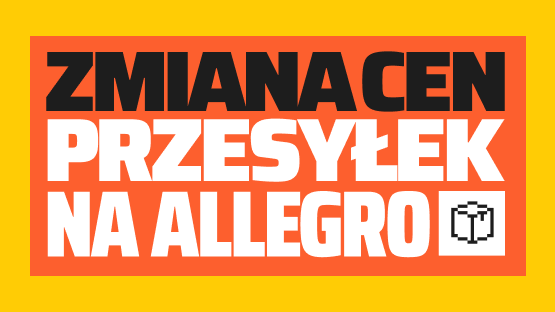Direct advertising - how does it work? Advantages and disadvantages of this form of promotion
Dla biznesu

8 February 2024
Effective marketing is based on building the closest possible relationship between a company and its customers. One of its traditional forms is direct promotion. Despite appearances, it is not losing its relevance in times of technological development and the dominance of online formats. On the contrary: direct marketing and direct advertising have more and more to offer. Read below how you can use them in your strategy.
What is direct advertising?
The definition is relatively simple and essentially follows from the very name of this approach to brand and product promotion. Direct advertising is a form of marketing communication that aims to interact directly with the audience. Of course, in this day and age, it does not always have to mean face-to-face contact. Direct marketing is increasingly based on remote contact. It allows a company to reach individual recipients directly, bypassing intermediaries and external platforms. This is an excellent way to precisely distribute an advertising message or encourage a specific action, such as making a purchase or leaving contact details. Of course, this model also plays an important role in relationship marketing.
Where it will work advertisement direct? The examples of many markets and industries show that this model is very versatile. Direct marketing is used both in the B2B segment, where other businesses are the addressees of communication, and in B2C, where a company wants to reach consumers. Of course, the various segments have different requirements and expectations, so in each case the communication channels and tools used should be adapted to the specific target group.
The opposite of this model is indirect marketing. In indirect marketing, it is much more difficult to target a precise message to a specific audience. A key role is played by various advertising formats placed, for example, on television, radio, in the press, in public spaces or online. Note, however, that direct and indirect marketing techniques complement each other very well and their combined potential will allow you to achieve success, which is sales. Among other things, indirect marketing allows you to build brand awareness and position your brand against the competition. Direct advertising, on the other hand, will work well at the final stages of the sales funnel.
How does direct advertising work?
Why does direct advertising work and continues to be the cornerstone of the marketing efforts of many companies representing diverse industries? Obviously, it is because of the basic premise, i.e. that the contact between the company representative and the buyer is as short as possible. This provides the opportunity for far-reaching personalisation of the message, and you also gain an excellent opportunity to tell the customer about the product or service you want to offer.
For advertising and direct marketing to work, there has to be a proper strategy and good choices behind them. Below you will find a list of five factors you need to clarify before launching a campaign:
- Target group segmentation: a basic prerequisite for successful direct advertising is the accurate identification and segmentation of your target group. Identify who your customer is and create a persona, i.e. a model audience. Then, on the basis of specific criteria such as age, gender, location or shopping preferences, you will be able to separate segments, allowing you to create an even more consistent and individual message.
- Choose your communication channels: as a direct marketing salesperson, you have a great deal of scope for reaching your audience. Of course, you can visit customers in their homes or offices, but direct marketing nowadays is based on contact via telephone or the internet. Your choices therefore include e-mails, text messages or social media messages.
- Create a personalised message: in direct marketing, the message should be as personalised as possible and tailored to a specific target group. Tailor the content to their needs and preferences. Of course, to make this possible, you first need to know them thoroughly.
- Call to action: direct mail advertising usually includes a clear and specific call to action. Encourage recipients to take a specific action, such as making a purchase, signing up for a newsletter, completing a survey or visiting a website.
- Monitor, analyse results and improve actions: to be highly effective, you need to monitor the results of your actions on an ongoing basis. Define success indicators (e.g. value or number of sales, number of new leads) and regularly check your progress towards your goal. Based on the data, which analytical tools such as Google Analytics or CRM systems will help you collect, you can refine your strategy. Experiment with different messages, communication channels or target groups. This will enable you to create the ideal conditions for growth.
Types of direct advertising
For many, direct advertising is still associated primarily with door-to-door salespeople who are not always welcome in our homes or offices. Of course, it doesn't have to be this way at all, and relatively early on, this type of promotion began to benefit from the potential of technology and new solutions emerging on the market. Most researchers consider Aaron Ward to be the originator of direct advertising. This American dressmaker had already developed a business based on mail order in the 19th century. Richard Warren Sears, founder of one of the largest chain shops in the USA, operated on the same principle.
Which solutions should you go for if you want to use direct marketing in your company? Examples of proven approaches vary widely. Here are some suggestions:
- Email marketing: of course, today traditional letters are increasingly giving way to their electronic counterparts. Mailing campaigns are one of the most popular forms of direct advertising in the digital age. You can send personalised emails to your subscribers or customers, present them with information about products, offers, promotions or share educational content. Email marketing allows you to contact your audience directly, is inexpensive and, from your customers' perspective, relatively low-impact. An interesting solution is an advertising entry in another company's newsletter. As part of InPost's advertising offer, this is one option, direct advertising, that could work well for your business.
- Telephone advertising (telemarketing): as the name suggests, this involves making phone calls to potential customers: direct sales can also be made in this way, of course.
- SMS: many companies also choose to send messages to potential customers. This is an effective form of communication that usually also complements other activities.
- Social media: nowadays we increasingly interact with other people via social media platforms. They can also be used to communicate directly with customers. It is a good way to reach consumers, in the case of solutions chosen by experts, such as LinkedIn, this model of action will also work in B2B marketing.
Advantages and disadvantages of direct advertising
As you can see, direct advertising can be of great benefit to your business and translate to a large extent into sales results. This is due to its easy-to-notice advantages, among which are:
- direct contact with the customer: this operating model allows a direct relationship with the customer to be established, resulting in greater trust and loyalty. Recipients value a personalised approach.
- Personalised communication: direct advertising allows you to focus on specific customers and tailor your communication to them. You can tailor your message and offers to the individual needs and preferences of your audience.
- Measurability and tracking of results: it is possible to track the results of actions taken with great precision. You can monitor conversions, ROI and other predetermined performance indicators.
- High control over the message: you gain full control over the content and message of the ad. You can determine exactly what you want to say to your audience and how you will say it.
- Precise targeting: you gain the ability to precisely define your target group and prepare a message that is appropriate for your specific audience.
However, direct marketing also has limitations and - especially if the campaigns are incorrectly prepared or executed - involves certain risks. Above all, this type of advertising may be perceived by recipients as intrusive, in which case it will not be possible to increase sales. So a sense of intuition is undoubtedly useful. Also pay attention to potential privacy violations. Direct advertising requires, among other things, the preparation of precise databases to target specific audiences. This must comply with data protection regulations. Violations of privacy can lead to negative customer perception and even involve additional liability.
Much depends on which formats direct advertising is based on. The types of communication channels and tools mentioned earlier vary greatly. To minimise the risk of failure, you need to consider which ones will be most effective with your audience.
When is it worth using direct advertising?
What is important: direct advertising - if properly planned and executed, of course - works in every industry. Above all, it is worth relying on it in the later stages of the sales funnel, i.e. when your potential customer is already familiar with your brand and is seriously considering making a purchase decision. By using direct methods, you gain the opportunity to tell them more about your product or service and encourage them to complete the transaction. It is also a very good method if you want to encourage existing customers to make further purchases or use more expensive services.
Direct marketing will not always work best at the top of the sales funnel, when the audience is not yet familiar with the brand and does not perceive a need to make a purchase. Of course, this does not mean that these techniques should be abandoned. Making direct contact - whether via the internet or telephone or face-to-face - offers enormous opportunities. However, both the message and the communication style must be very skilfully crafted.
InPost advertising - see how we can help you reach your audience directly!
In the case of direct advertising, creativity and an out-of-the-box approach to the campaign play an even more important role. It is through these that recipients, who are the target of the marketing communication, will feel valued and engaged, rather than being 'bombarded' with templated attempts at contact.
Sampling, i.e. giving recipients free product samples, can bring great results. Now you can also use this solution in cooperation with InPost. Recipients will get free samples by visiting their favourite Parcel Machine, allowing you to instantly reach people potentially interested in your products and build positive brand associations.
The parcel machine can, of course, also serve as an attractive outdoor advertisement. By deciding to wrap the device or display advertisements on screens, you will be able to reach millions of recipients and expose your company in more than 21,000 locations across the country. You will gain additional opportunities by placing your company's banner ad on the InPost app or within the inpost.pl website. This is a great way to simultaneously operate in multiple channels and implement a complete promotional strategy combining direct and indirect actions in the right proportions. Apply for cooperation and find out about all the advertising activities we offer at InPost!
Reklama Twojej firmy z InPost? To zawsze dobry pomysł!
Poświęć 1 minutę i zostaw nam swój kontakt, a przedstawimy Ci ofertę skrojoną na miarę.
Możliwości jest naprawdę sporo:
- oklejanie urządzeń Paczkomat
- reklama na ekranach urządzeń Paczkomat
- sampling produktów reklamowych
- banery reklamowe na stronie InPost
- reklama w newsletterze InPost
- powiadomienia push w aplikacji InPost Mobile
Czytaj również

How do you prepare your online shop for Black Week? Find out the proven ways!
Black Week is the best opportunity to hunt down the goods of your dreams at attractive prices. During this period, online shops go on a ...

Hotel advertising - how to promote your hotel online and beyond?
In order to create more effective marketing and effective online advertising for your hotel, you need to find your target group and the ri...




